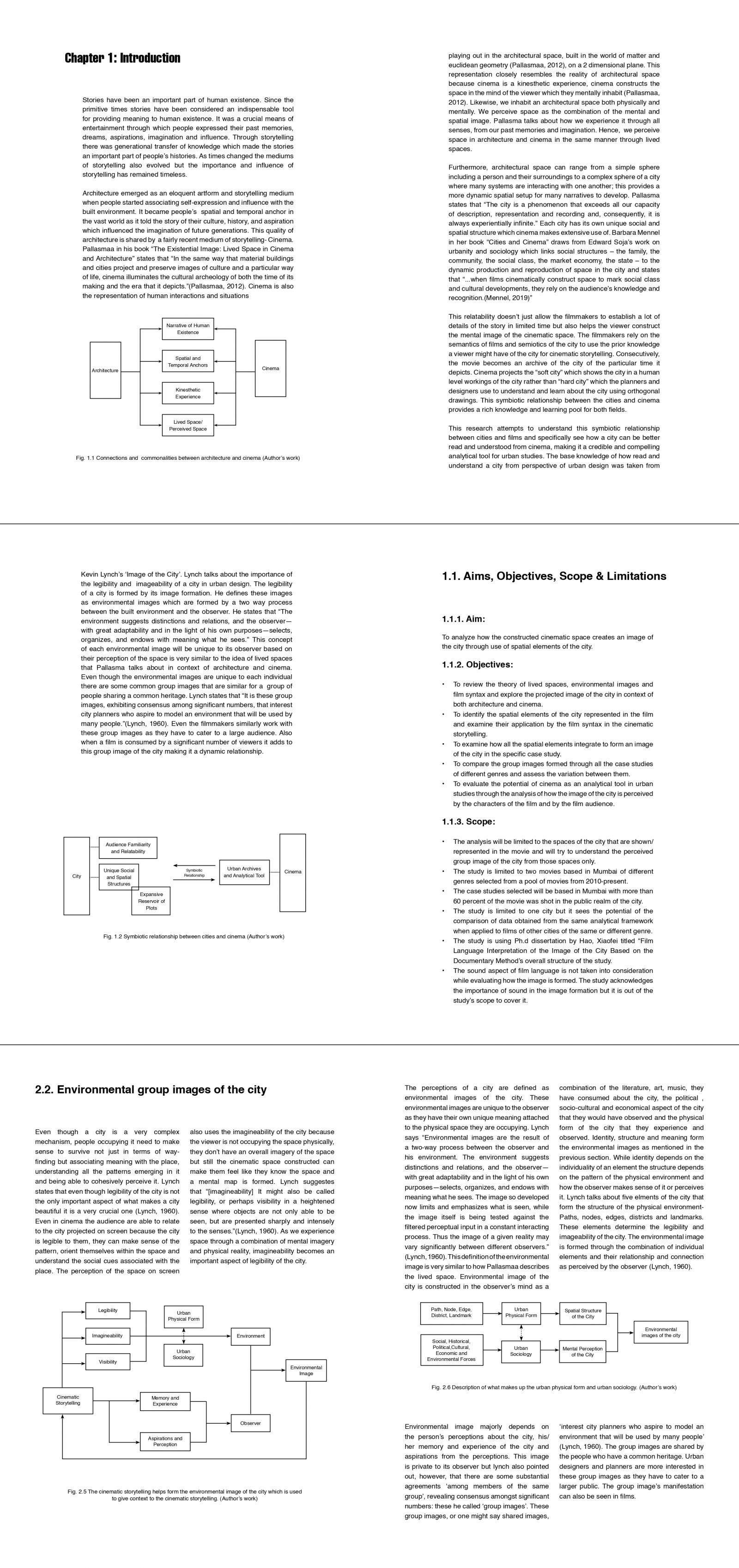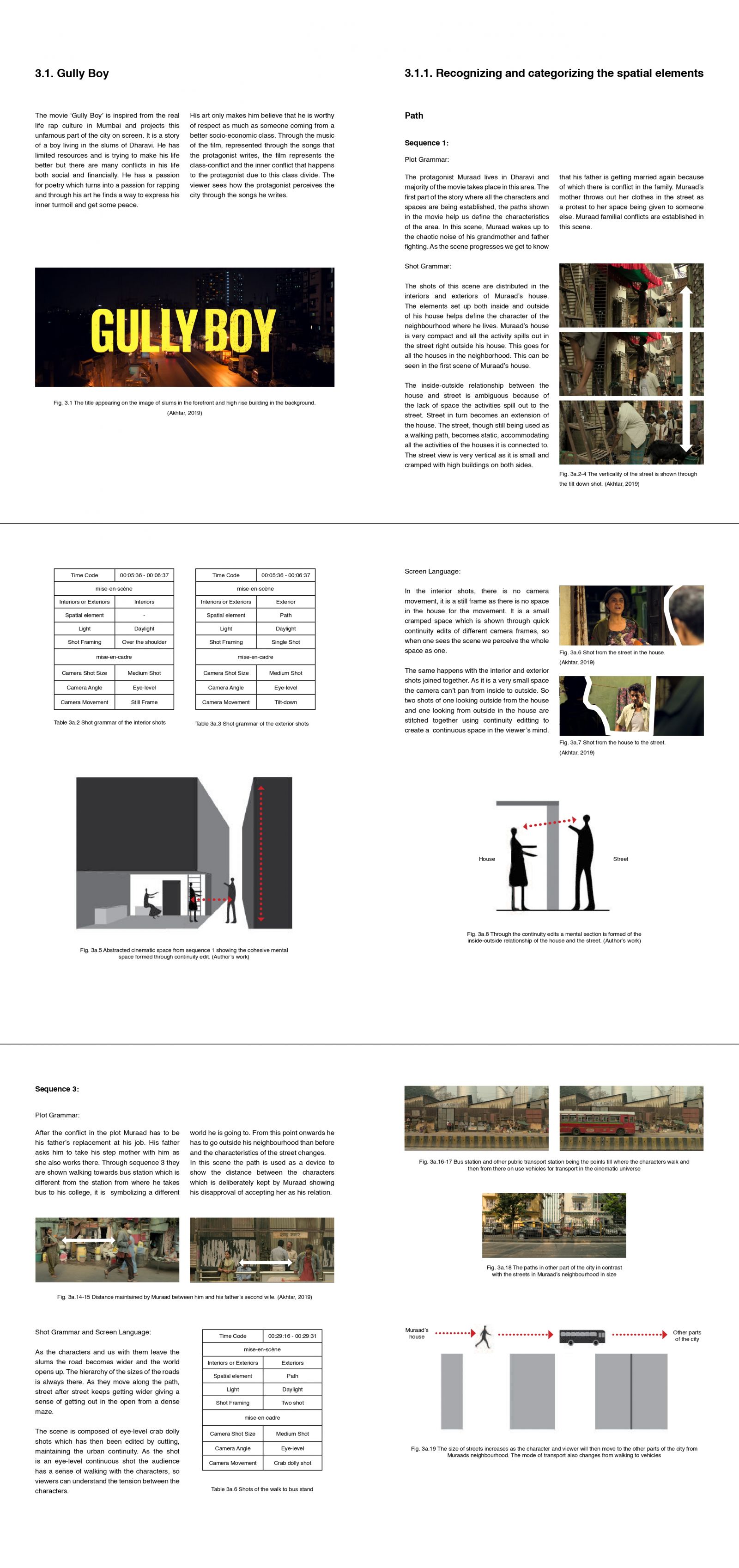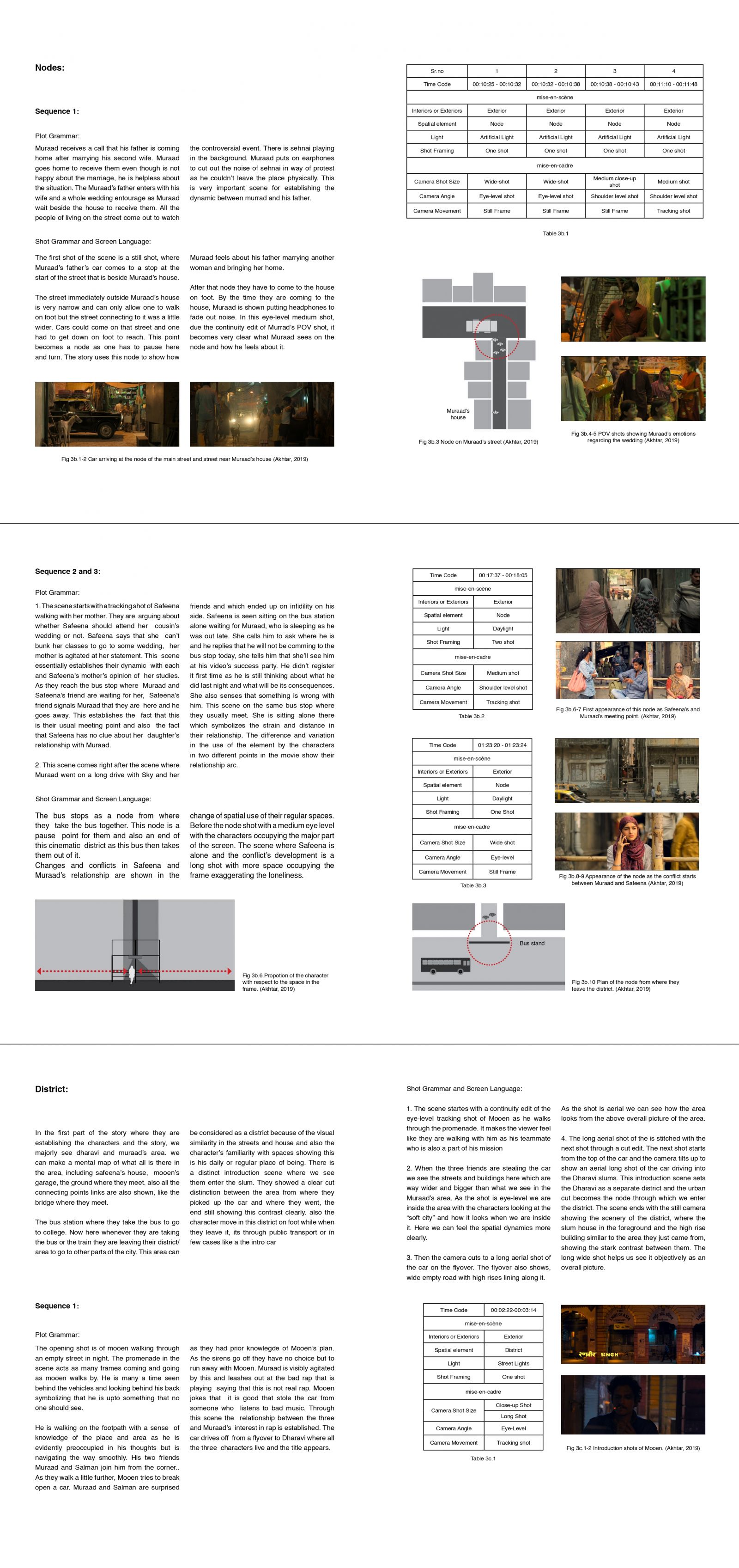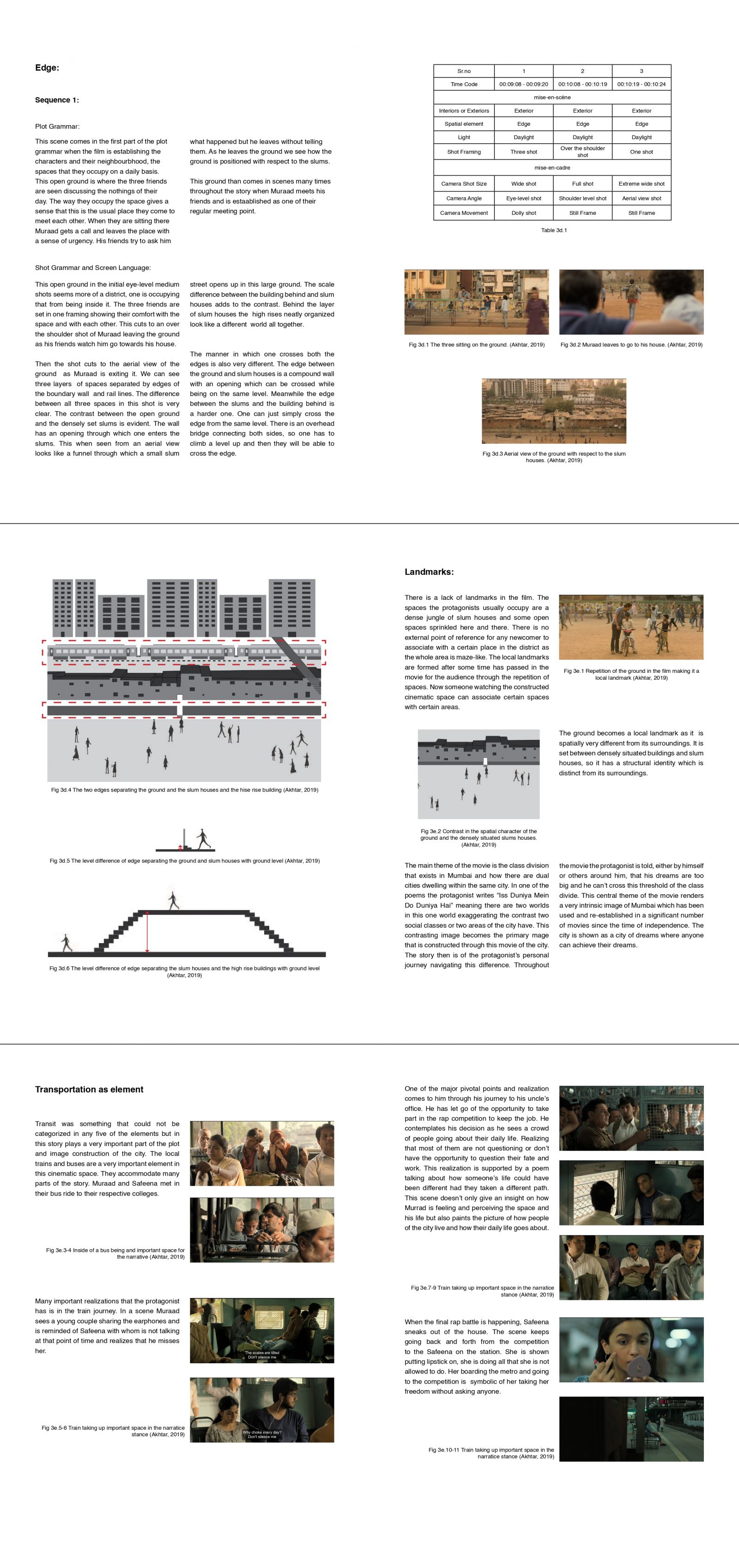Your browser is out-of-date!
For a richer surfing experience on our website, please update your browser. Update my browser now!
For a richer surfing experience on our website, please update your browser. Update my browser now!
This research tries to understand this relationship between the group image of the city constructed through the cinematic space and use of the city’s spatial element and film’s narrative structure to create the space. Lynch states in his book that “This analysis limits itself to the effects of physical, perceptible objects. There are other influences on imageability, such as the social meaning of an area, its function, its history, or even its name. These will be glossed over, since the objective here is to uncover the role of form itself. It is taken for granted that in actual design form should be used to reinforce meaning, and not to negate it.”(Lynch, 1960). The study attempts at adding the layer of social meaning of the spatial structures of the city through analysis of cinematic spaces projected in the films to the group image of the city. Film semantics is to be understood to recognize these layers that the filmmaker forms over the spatial forms of the city. The aim of this paper is to comprehend how these group images are then used to tell the story of the characters in the city and the story of the city itself. Cities carry stories of the people of a particular time and place. Cinema captures these stories for the future generation to see and know and learn about that particular time. It influences people’s perception of the city and in turn builds their dreams and aspirations of the city. Understanding cinema this way then makes one understand how city design influences people’s live.
View Additional Work




.jpg)
.jpg)
.jpg)
.jpg)
-min.jpg)